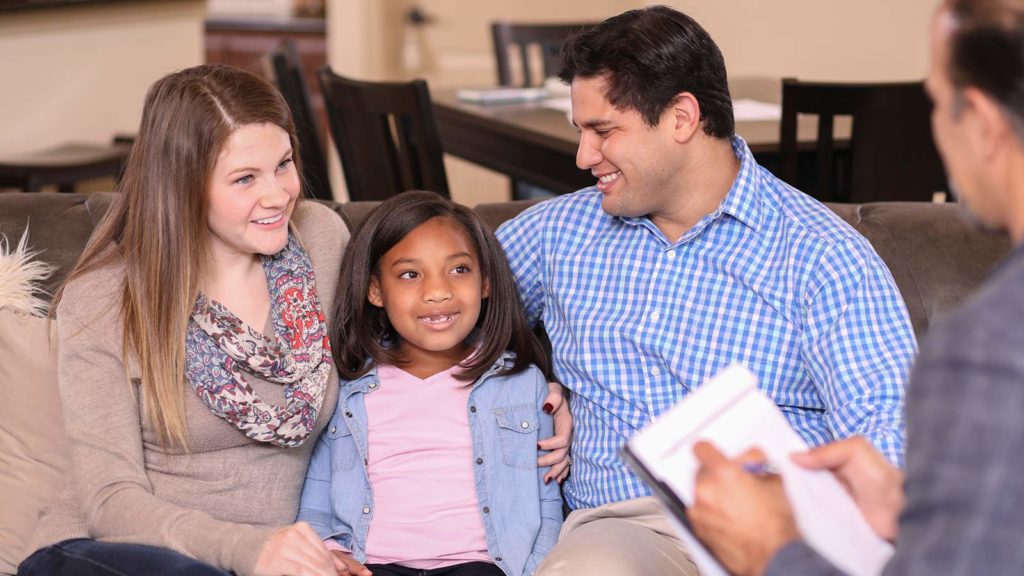Children experience what we call “ordinary stress” throughout their growing years. Sources of typical stress may be problems getting along with a friend, entering a new grade at school with peers or a family move to a new home in the same community. Coping with these common life experiences gives children the opportunity to test out their social skills and solve problems effectively.
Other more challenging experiences can lead to what we call “chronic stress,” where difficult stressful situations last for weeks or months and cause children to feel extremely sad, anxious or angry with no end in sight. These kinds of stress are difficult to manage. Examples of chronic stress in a child’s life include intense ongoing arguments and discord in the family, family divorce or separation, adoption-related stresses or concerns, long-term military deployment of a parent, chronic violence in the neighborhood, consistently failing at school, falling so far behind in schoolwork that there is no chance of catching up or being frequently bullied or teased at school. If faced with these kinds of challenges, parents should look for signs of chronic stress in their child and take steps to get help.
Times of stress are also times that are signals for growth, and if we use adversity properly, we can grow through adversity.
Rabbi Dr. Abrahan Twerski
A few signs your children might be stressed:
- Increased irritability or anger
- Acting out
- Increased complaints of fatigue, stomachaches or difficulty with sleeping
- A deep unwillingness to leave the house or engage in typical social activities
If you see these chronic stress signs:
1. Make sure your child gets enough sleep.
Sleep helps us to restore our ability to cope and process what has happened during the day. Work with your child to extend their sleep time, and look for ways to help them get more rest every day and night so they are well fortified to manage stress.
2. Increase your child’s physical exercise.
Outdoor exercise helps children relax and regulate their moods. If your child is inactive or depressed, you may have to be creative to get them to get up, go outside and exercise. Offer to exercise with your child, play active games with them, create family goals for exercise and have rewards when your family reaches these exercise goals.
3. Help your child talk about their stress with a trusted adult.
Talking with a caring adult can help a child put a stressful situation into perspective and help manage stress. Often our worried thoughts about the future are a driver for stress in the present. When talking things out, encourage children to think of the problems in new ways and generate new solutions to address their stress. Make sure adults listen to the unique ways that children identify and interpret their stressors. Often their view will be different from how adults see a similar situation. If children can’t talk to a parent about their concerns, make sure the trusted adult has a background on the child’s situation and shares your values about listening to and supporting them.
4. Make time for fun.
To make a stressful situation less painful, help your child participate in activities that bring them real joy. Involvement in music, the arts or playing with favorite toys or games give children a mental break from a long-term stressful situation. After participating in activities that delight them, children may be more open to considering new ways of thinking about the problems they face.

Check out additional parenting resources!
View our expanded list of recommended parenting websites, books and other resources organized by topic.
5. Help children write about their concerns.
Recent research supports journal writing to reduce stress in children. Children and teens can write about what they are grateful for, or proud of, to ease anxiety and depression. We encourage parents to join their children in journal writing to model ways to reduce stress. For young children who cannot write their own journals, parents can be their “scribes.” They can listen and write down, without judgment, children’s thoughts, ideas, feelings and worries.
6. Help children learn mindful meditation techniques.
Teachers, counselors and parents have found that by teaching children how to use mindful meditation techniques, such as calm focusing on the present moment, deep breathing exercises or visualizing a more positive future, children learn how to manage stress and build important life skills. By using these techniques, children can learn how to calm themselves down and see situations from other perspectives.
7. Be a role model for handling stress.
Your children will look to you and learn from you when you show them, with both your words and actions, how to handle stressful situations. Let children know how you are choosing to handle stress and the results you achieve. Join with them in any of the above stress-reduction activities to reduce isolation, and model techniques to regain control of a stressful situation.
By taking an active role in helping your child cope with long-term hardship or stressful events, you will build their resiliency and enable them to work through tough challenges. When faced with adverse experiences, children need the support of at least one caring adult who will listen to their needs and get them the help they deserve.

Receive Post Adoption Coaching & Education
All parents encounter challenges as their children grow up. And sometimes, issues may arise that leave you uncertain as to how best to respond. But not every issue requires therapy or counseling. The PACE program is here to help during those times.


